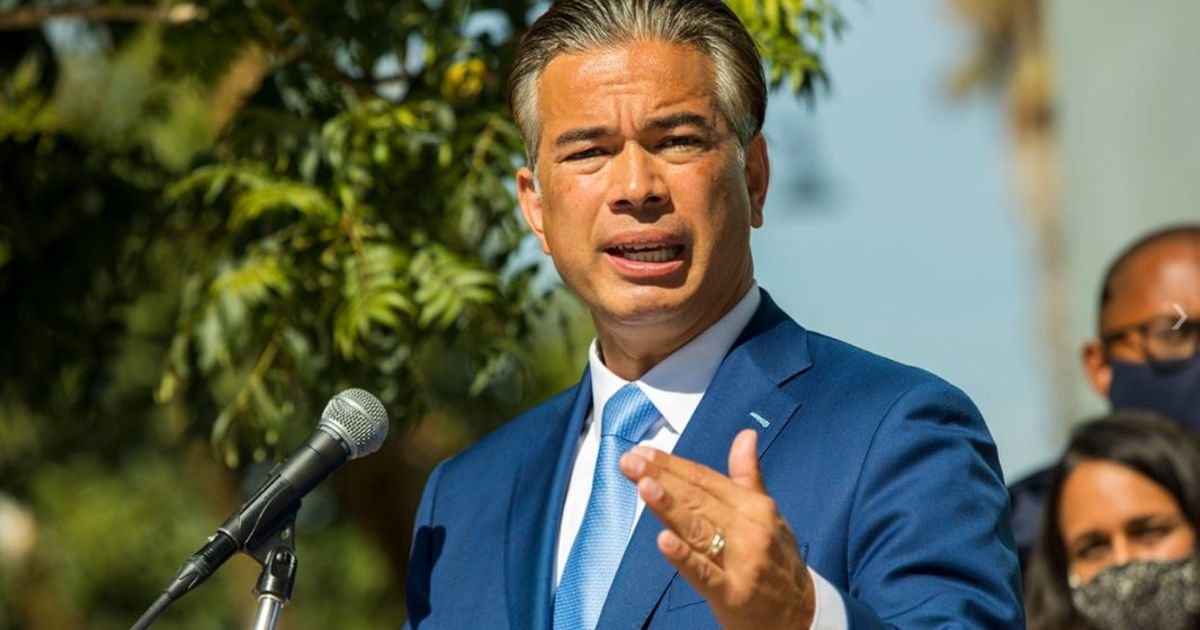
California Attorney General Rob Bonta last week tore into guaranteed asset protection coverage and backed a new bill to regulate the auto finance and insurance product.
An attorney general’s office news release Feb. 16 called GAP “a costly add-on product of little value to consumers” and “a bad deal” unless a customer was underwater on a loan. It promoted Assembly Bill 2311, which would establish new rules for GAP sales and cancellation in California.
“When Californians walk into a dealership to buy a car, they should feel confident that they’re not getting ripped off,” Bonta, a Democrat, said in a statement Feb. 16. “Unfortunately, auto dealers often play off our anxieties around making this big purchase, convincing us to add on unnecessary products for hundreds of additional dollars. Paying off your auto loan is hard enough without these junk products tacked on.”
Asked about the harshness of these comments, Bonta’s press office said some GAP could have value.
“AB 2311 establishes guardrails so that consumers can benefit from GAP waivers without being subjected to unfair and predatory practices,” Bonta’s press office wrote in an email to Automotive News on Tuesday. “Industry participants who sell GAP waivers on reasonable terms will benefit from the equal playing field AB 2311 establishes. AB 2311 does not limit consumers’ access to fair and beneficial products.”
GAP coverage pays any loan balance not reimbursed by traditional auto insurers — which are only obligated to cover the actual value of the vehicle — after a total loss. Guaranteed Asset Protection Alliance Executive Director Tim Meenan, of Meenan P.A., said this protection had value.
“There are substantial claims paid under GAP contracts,” Meenan told Automotive News on Tuesday.
It’s also common knowledge that a new car depreciates, Meenan said, giving the example of a $30,000 loan for a vehicle totaled two weeks after the vehicle’s purchase. The property and casualty insurer might only reimburse a vehicle value of $25,000, leaving the consumer owing $5,000. A “single working mother” can’t afford a replacement vehicle while still paying off the balance of the old loan, he said.
“It creates substantial financial pressure,” he said.
Vehicles normally depreciate between 10 and 20 percent annually, according to Black Book Senior Vice President and Chief Data Science Officer Alex Yurchenko.
AB 2311, introduced by Assembly Member Brian Maienschein, D-San Diego, adds GAP waivers to the list of add-on products California code requires be itemized to customers. The list also includes vehicle service contracts and “optional debt cancellation” deals, and California New Car Dealers Association President Brian Maas in a statement Feb. 18 called GAP “already regulated as optional debt cancellation agreements.”
“The protections provided in AB 2311 extend far beyond the existing requirements applicable to debt cancellation agreements in the indirect auto lending context,” Bonta’s press office wrote.
Under AB 2311, customers would also need to be notified that neither lenders nor sellers can make vehicle transaction terms contingent upon buying GAP. Consumers also would have the right to cancel GAP any time and see a prorated refund credited to their vehicle loan balance, and GAP would be automatically canceled and any balance refunded if the loan is repaid.
Meenan’s GAPA has backed language in other states to notify customers that GAP is optional and can’t be tied to the sale or loan terms. It also has encouraged having the balance of GAP’s cost automatically refunded if the auto loan ends early.
“GAPA actually supports some of the changes he’s seeking,” Meenan said.
But the organization disagrees with other aspects of the bill, he said.
AB 2311 bans sales of GAP contracts that cover less than the vehicle sale contract’s loan-to-value ratio, defining this as the amount borrowed compared with the sticker price on new models and the average National Automobile Dealers Association retail value on used vehicles. The bill also bans GAP contracts if the amount financed on new or used models is less than 80 percent of the sticker price or NADA retail value, respectively, once the cost of GAP, credit insurance and service contracts are subtracted.
Bonta’s news release said the bill would prevent “partial waivers and valueless waivers from being sold as GAP waivers.”
Meenan said partial waivers arise in situations such as negative equity from a trade-in rolled into a new loan. In many cases, GAP isn’t designed to pay off one’s previous vehicle, he said. “There has to be some limits,” he said. Otherwise, there’s a “moral hazard.”
Partial waivers might be appropriate if the customer keeps and sells the totaled vehicle or is behind on car payments, he said.
AB 2311 also caps the cost of GAP at 2 percent of the amount financed under a vehicle sale contract.
“GAP need not cost more than 2 percent of the loan value, particularly in light of the dramatically lower prices for GAP insurance that provides the same benefits,” Bonta’s press office wrote in an email.
According to Edmunds, customers financed $30,095 on the average used vehicle and $39,216 on the average new vehicle nationwide during the fourth quarter of 2021.
“Capping the retail price is not something that occurs hardly anywhere,” Meenan said. “We believe that competition is the best way to maintain competitive rates.”
Meenan said his organization hadn’t spoken to Bonta but planned to do so. He said it was working on talking with Maienschein, the bill’s sponsor.
“Despite their name, GAP waivers hardly provide the bare minimum protections for the car buyer,” Maienschein said in a statement Feb. 16. “This bill will ensure that car buyers are covered through stricter consumer protection laws, helping them avoid this costly add-on when unnecessary.”
Maienschein’s office did not respond to an email message seeking comment.
“California’s new-car dealers are committed to providing the best possible products and services for their customers,” Maas said in a statement. “CNCDA looks forward working alongside lawmakers to enact policy based on facts, that provides the best outcomes for Californians.”